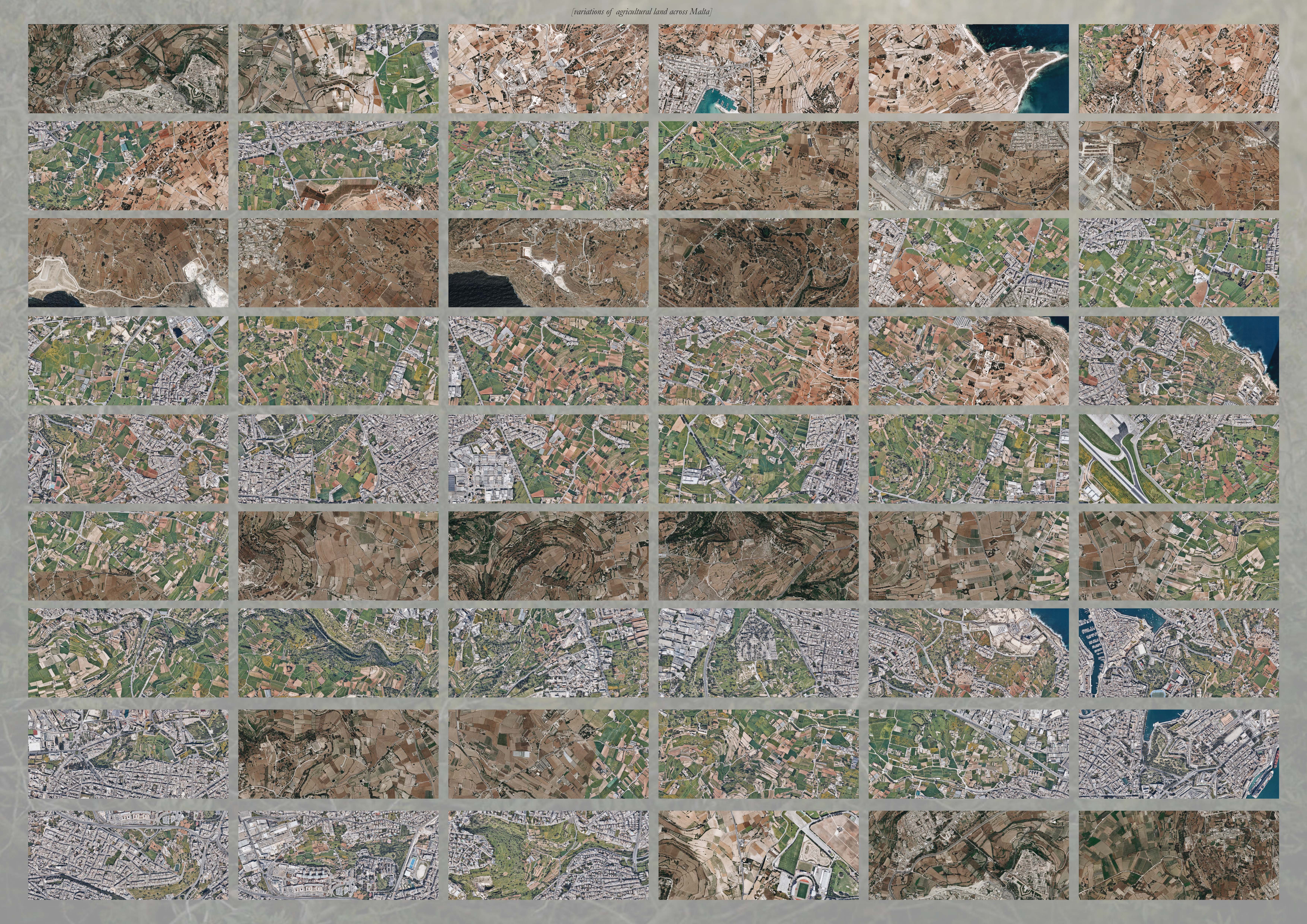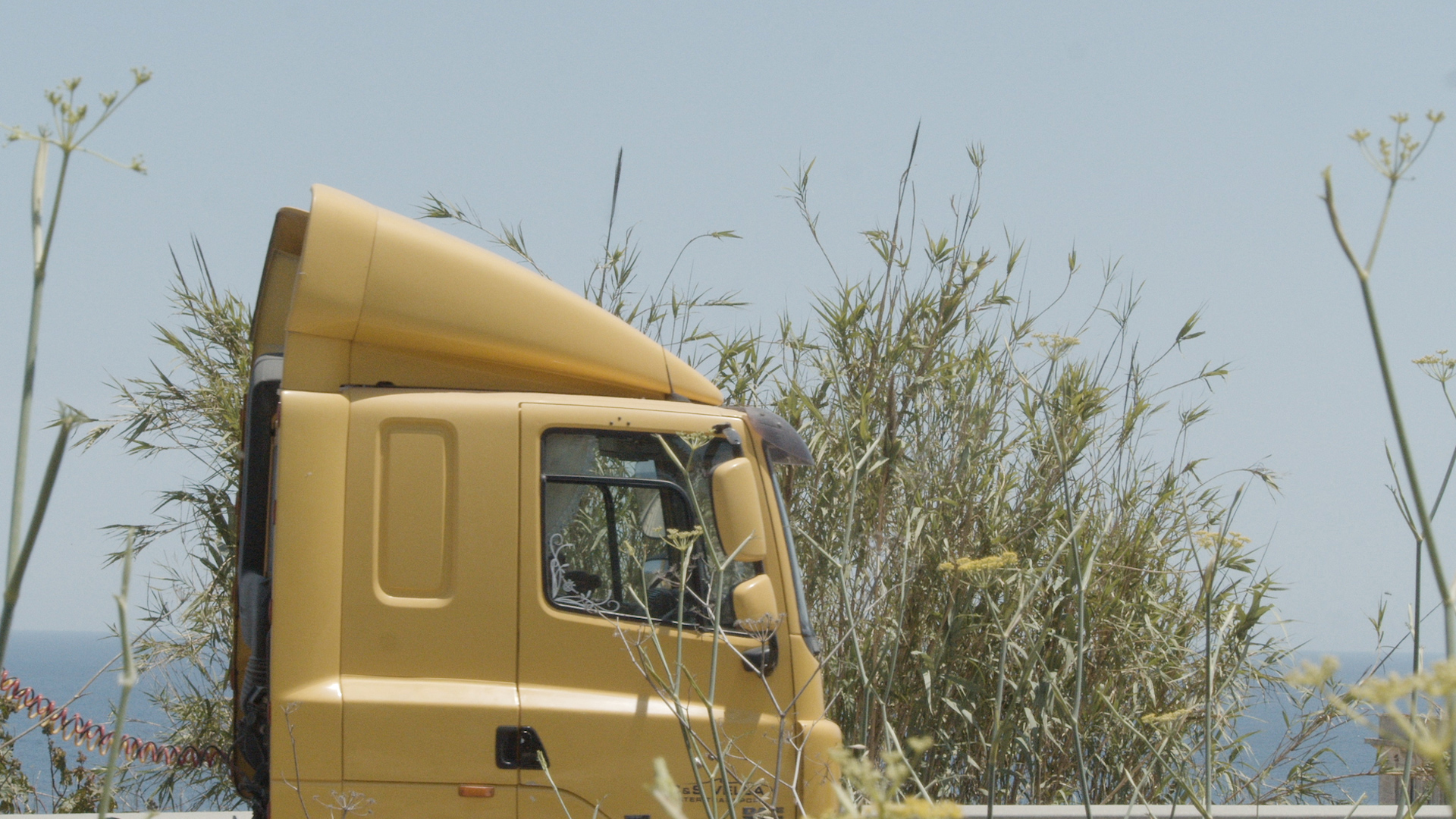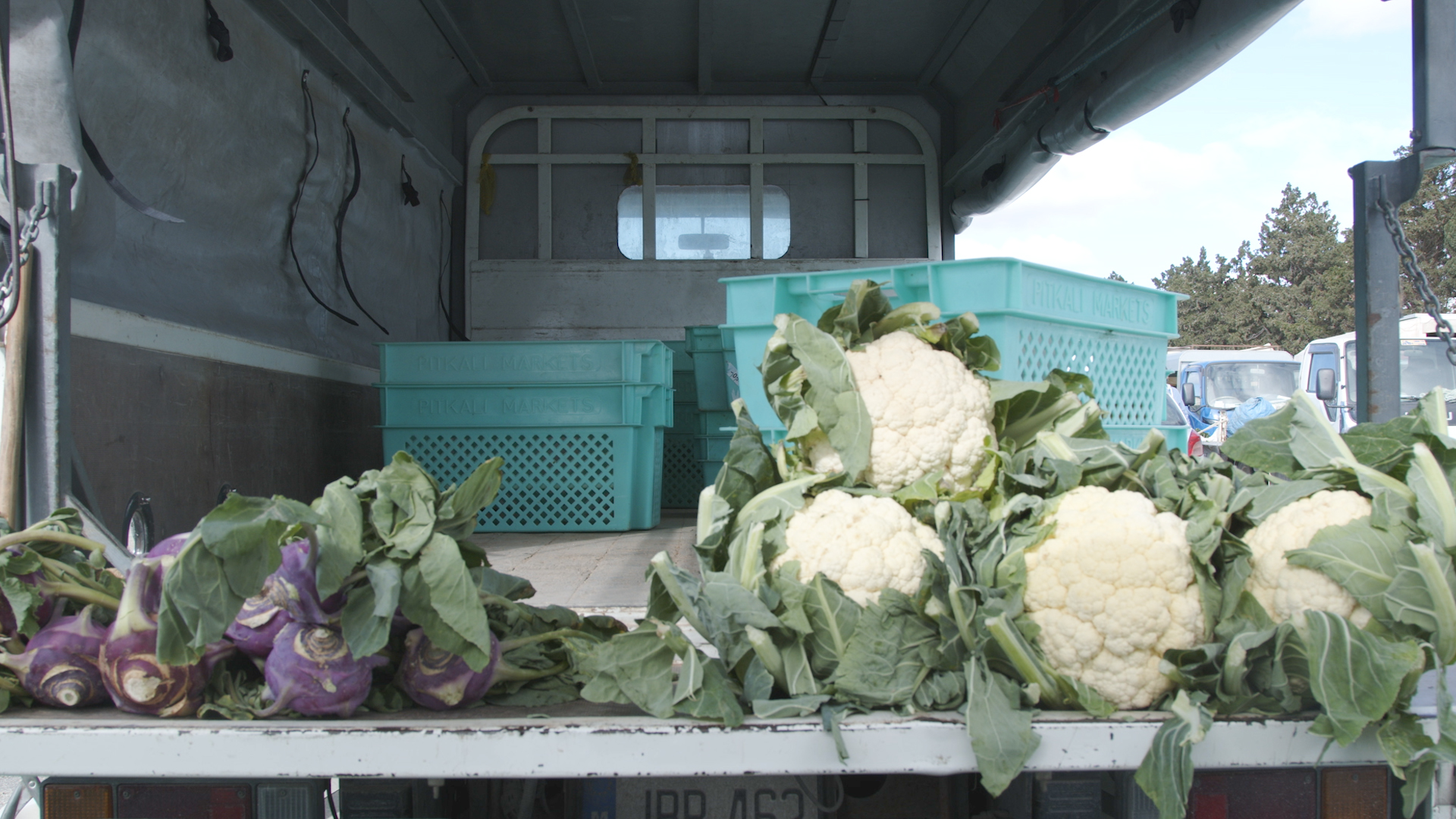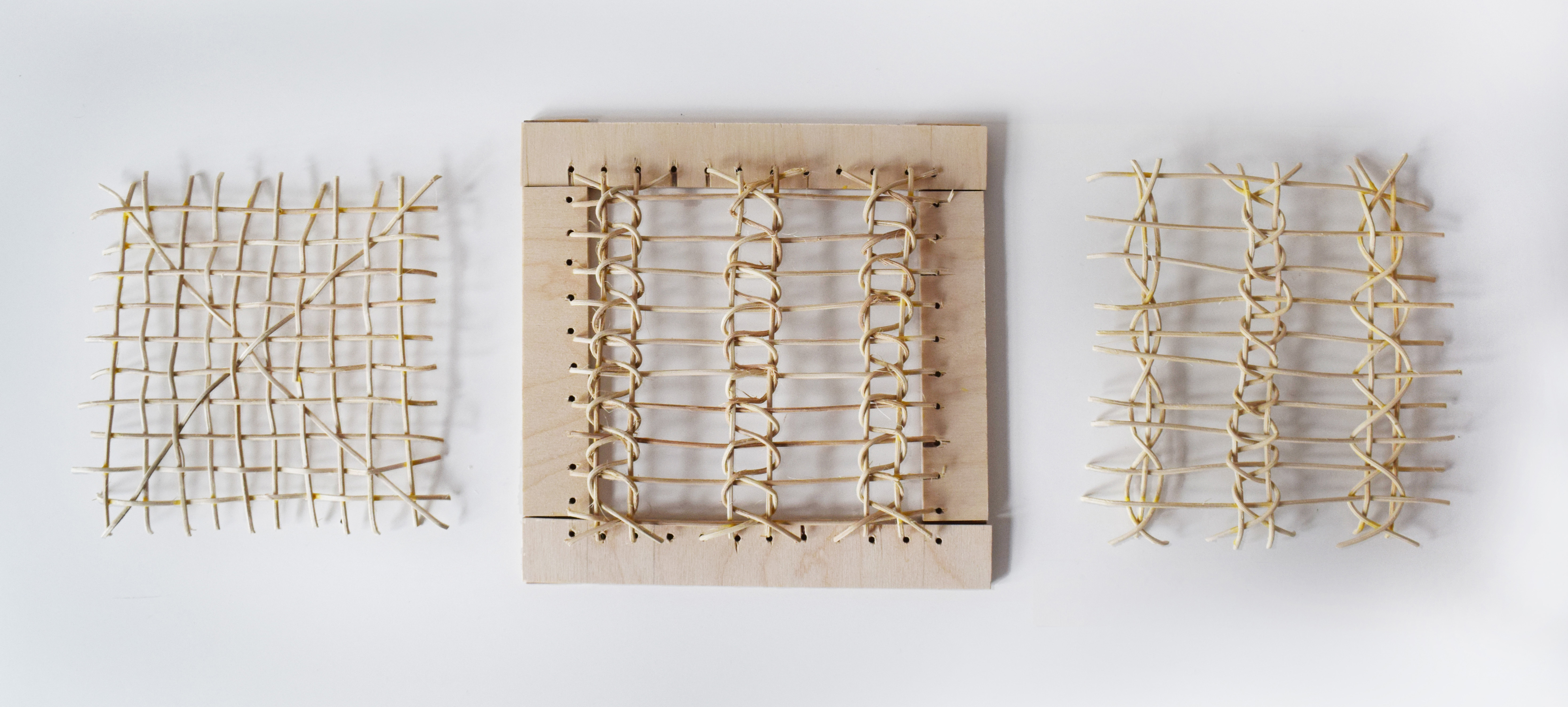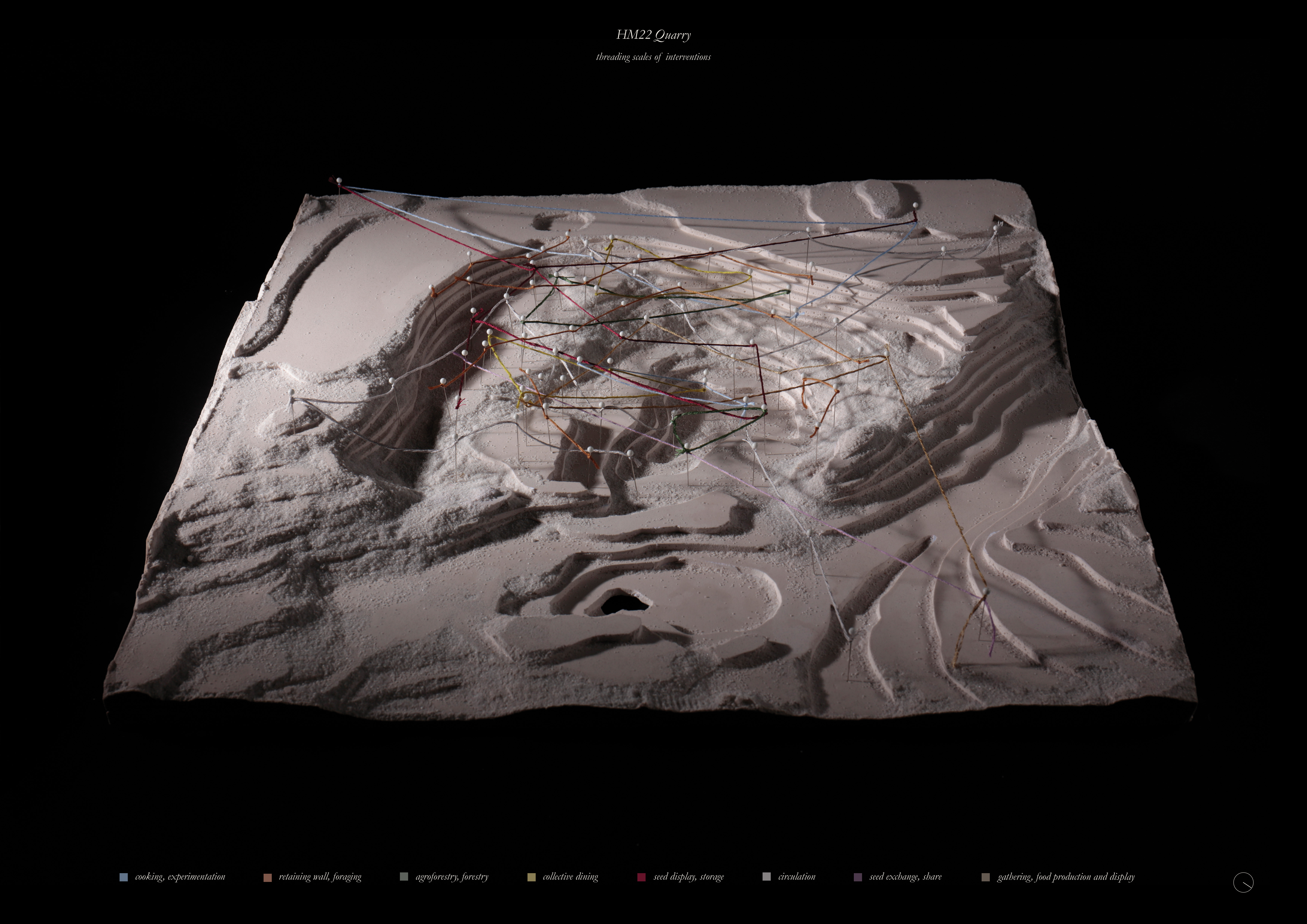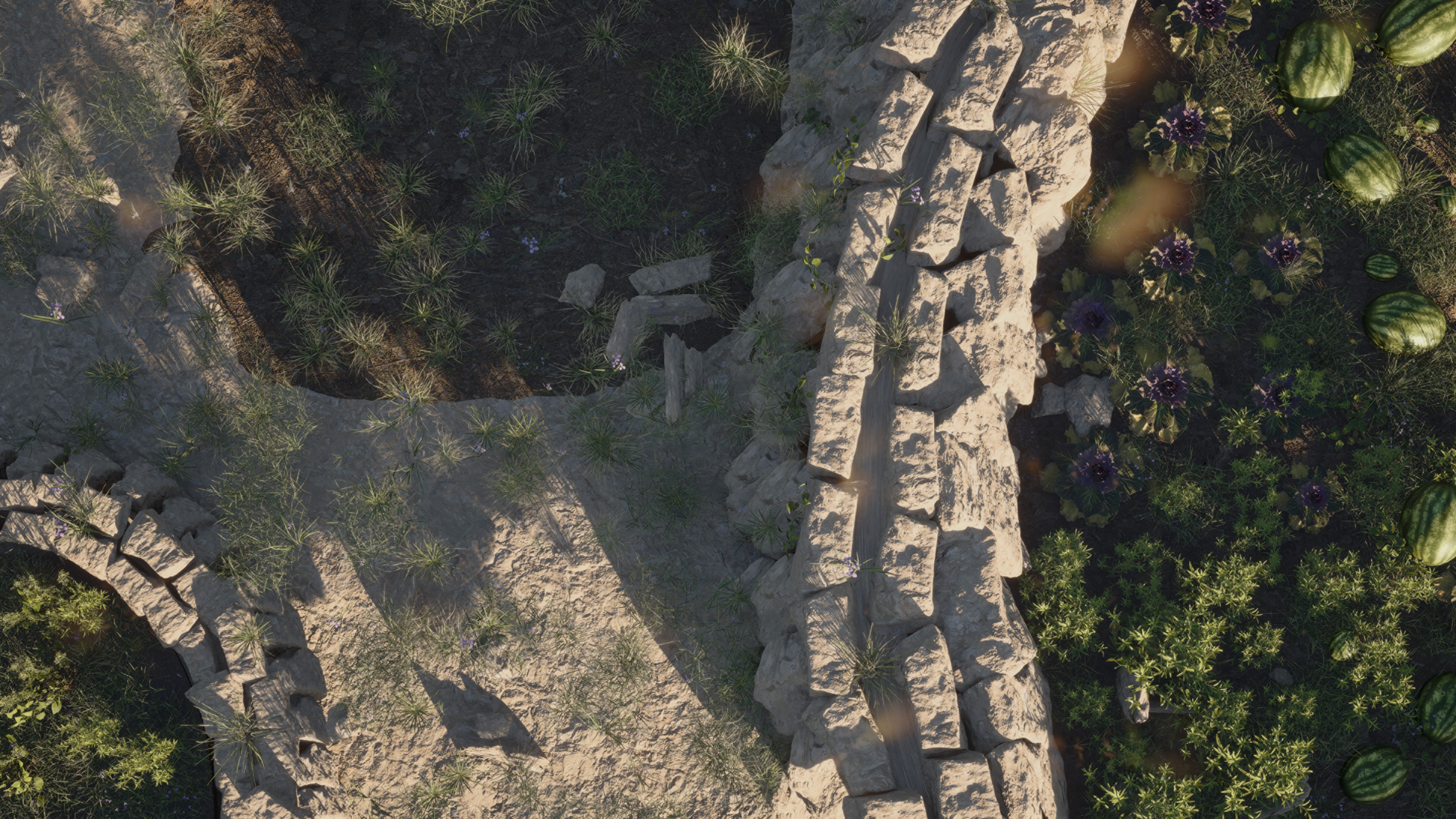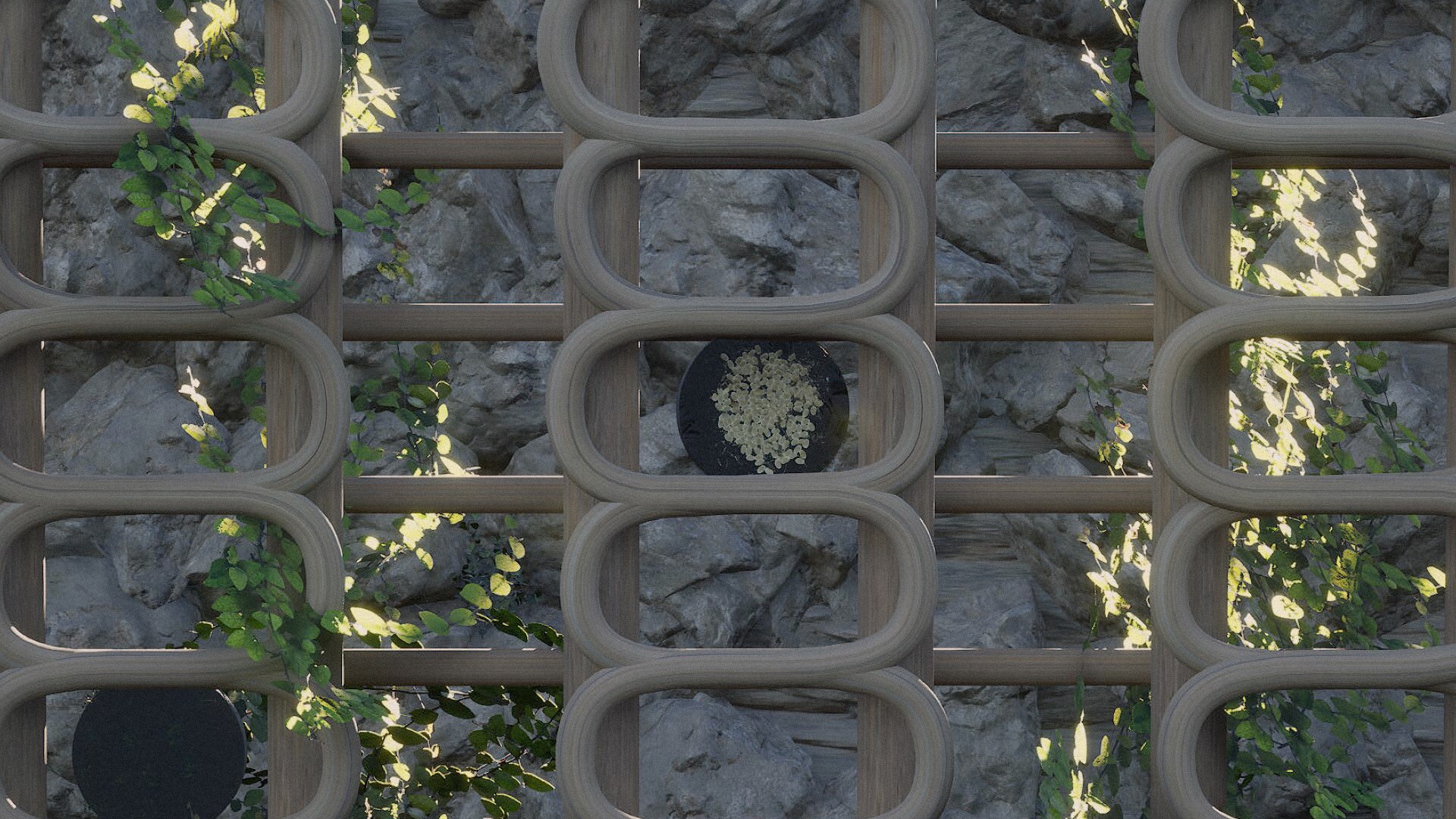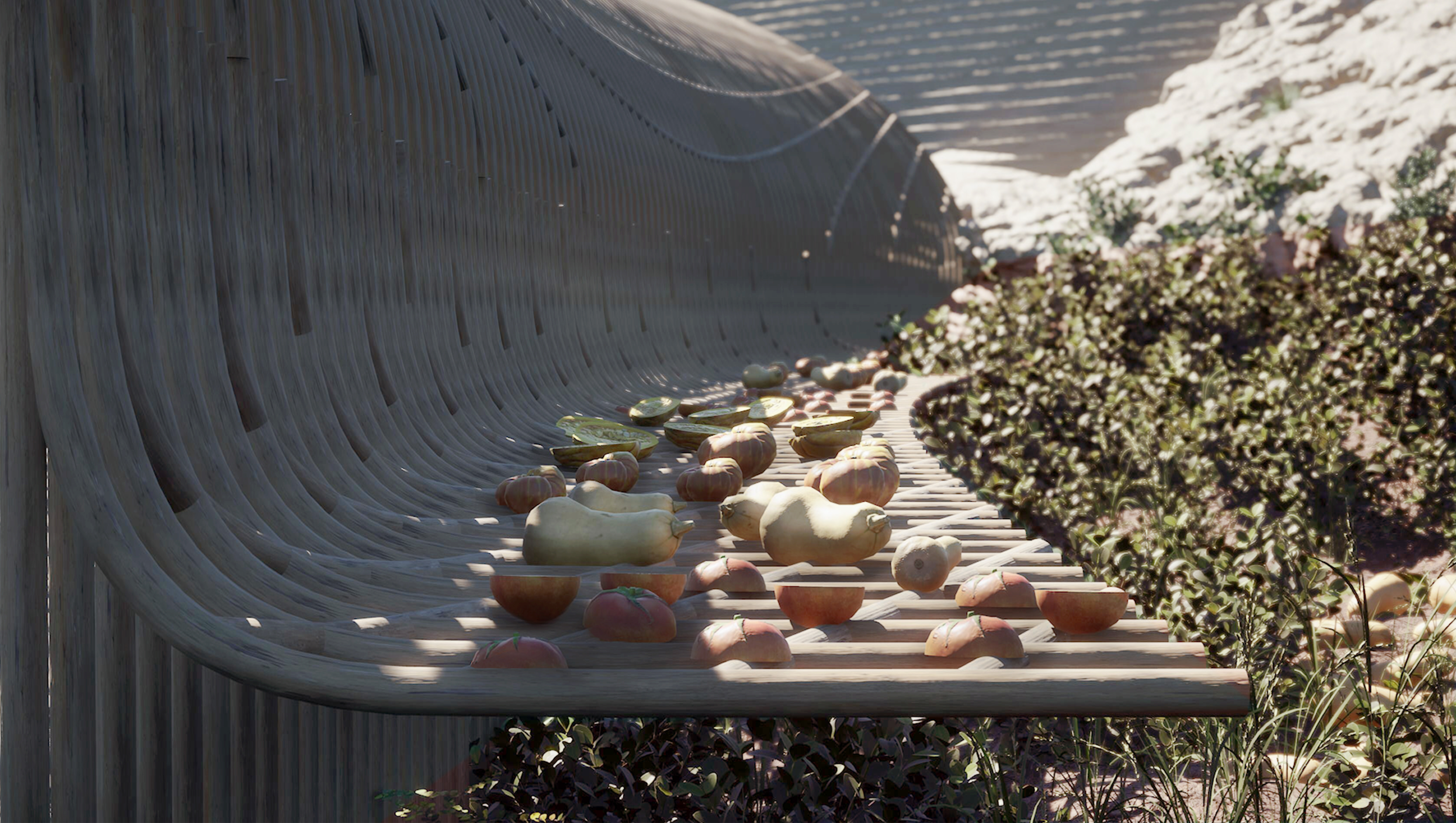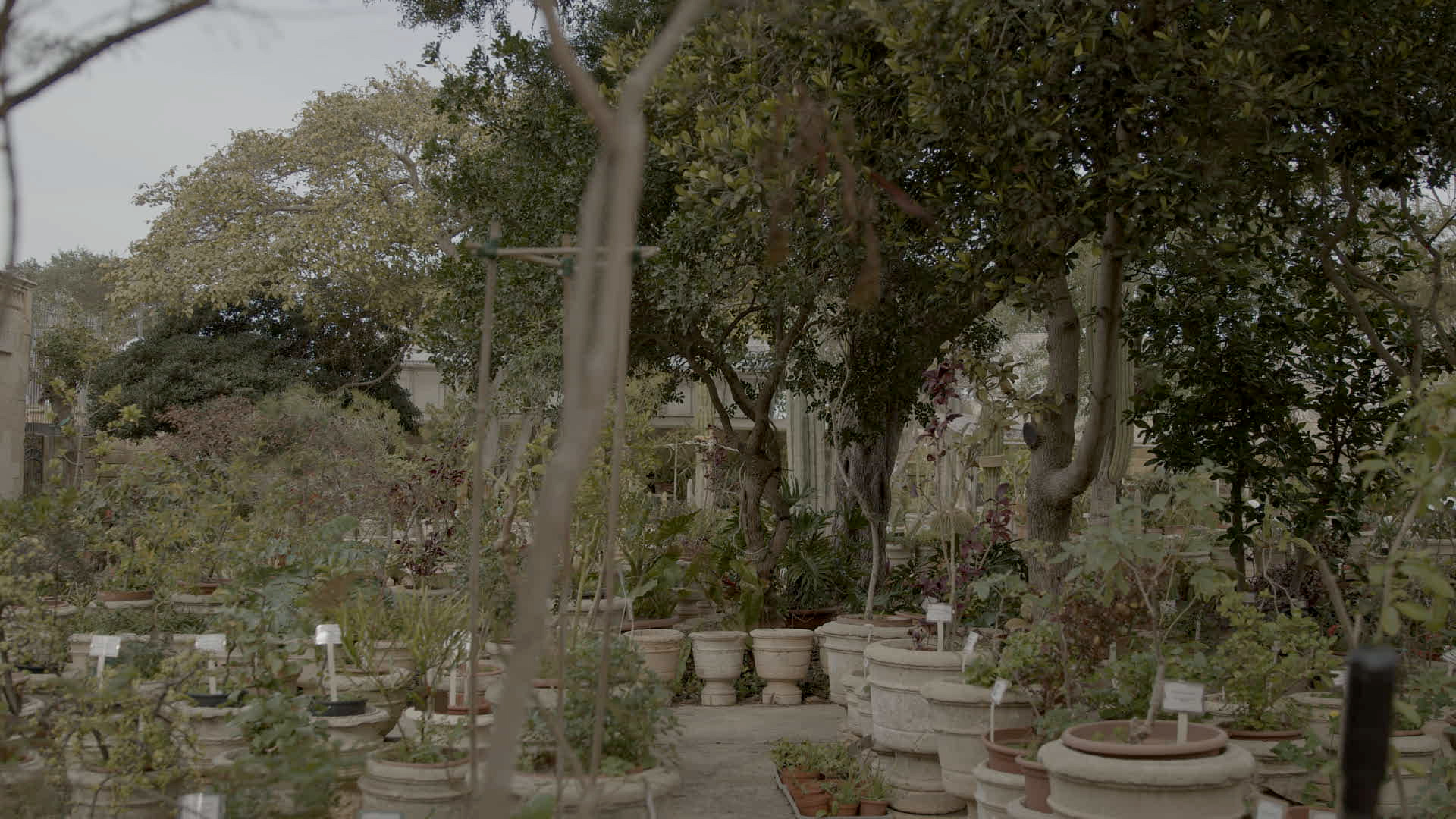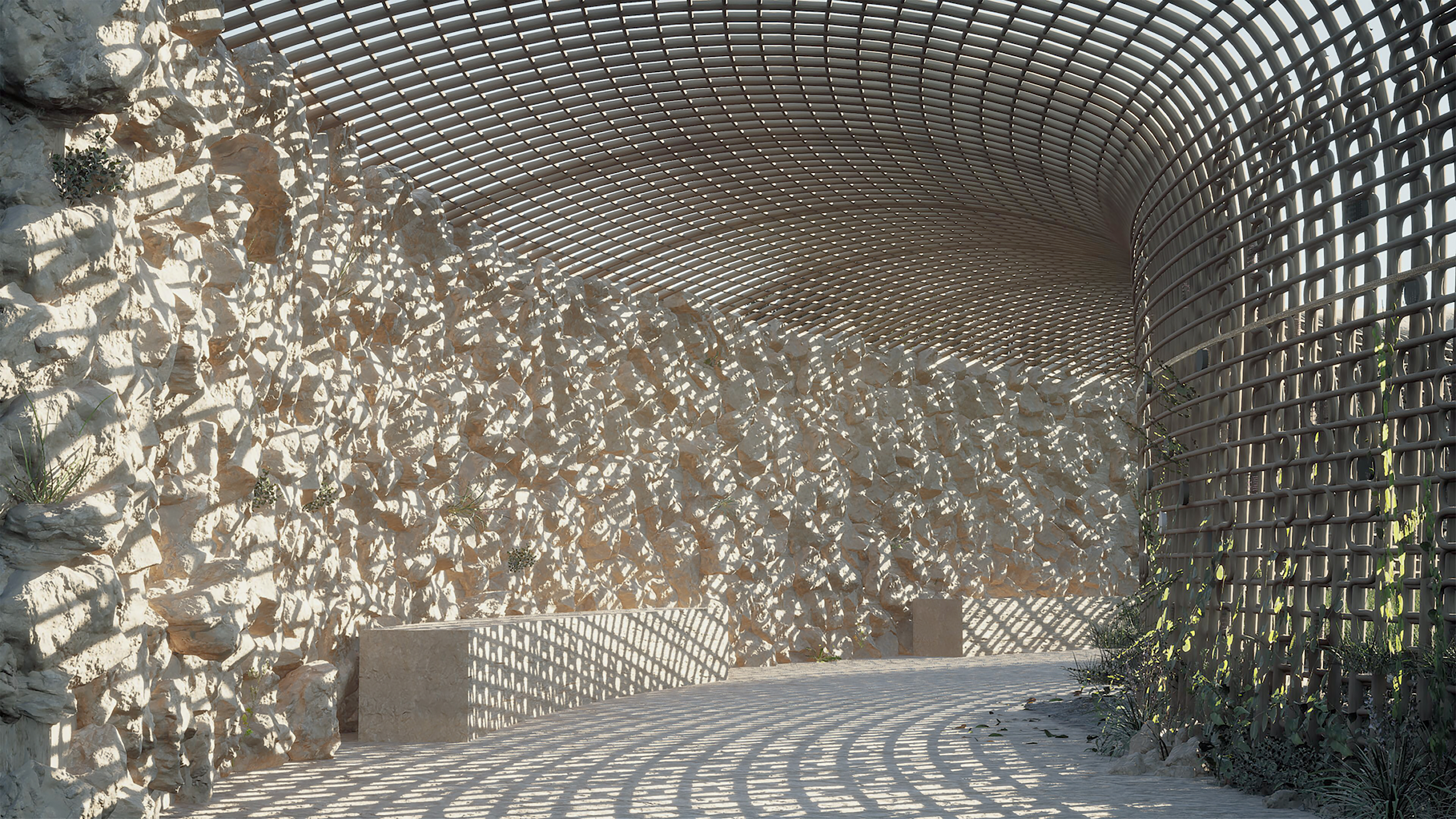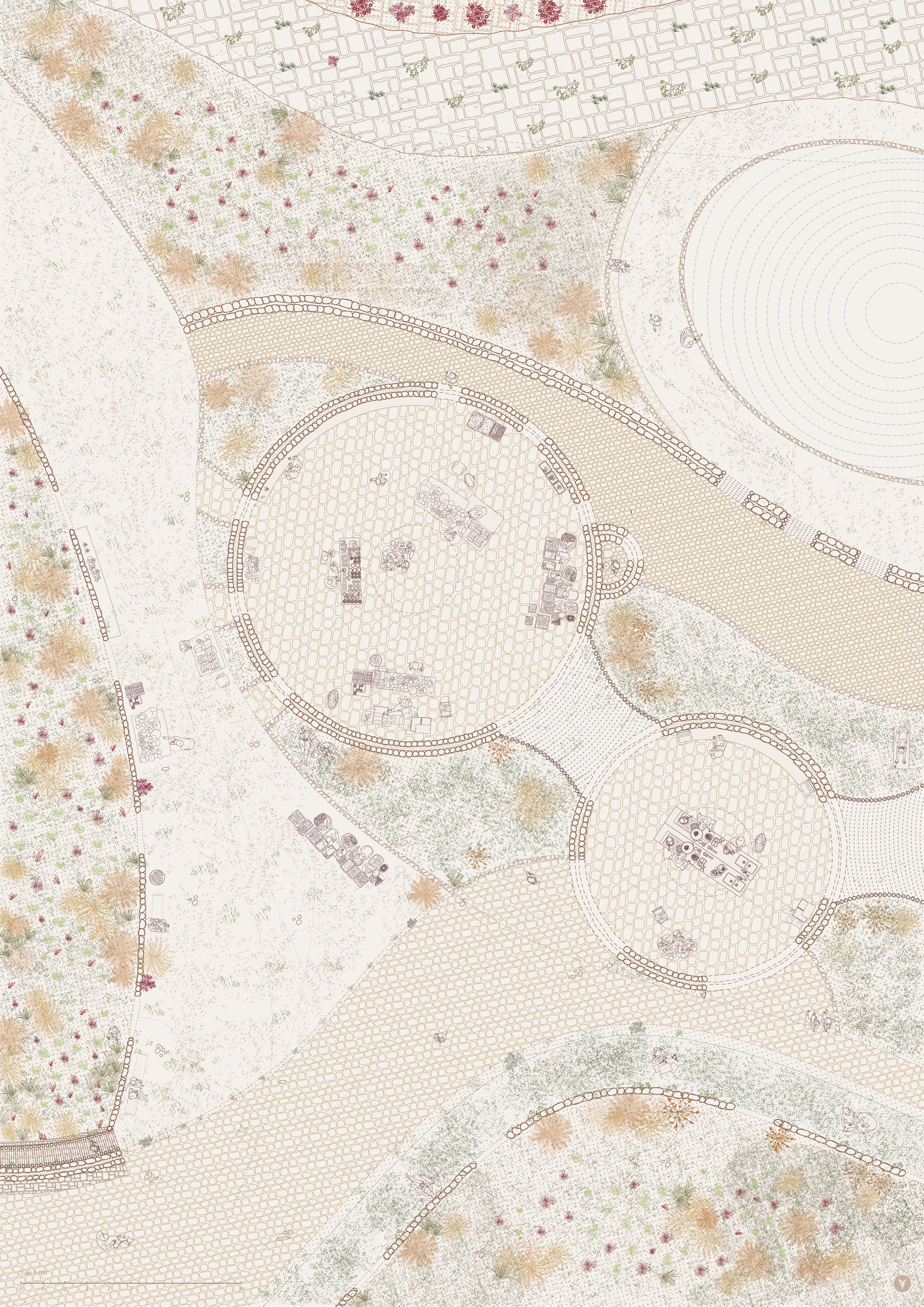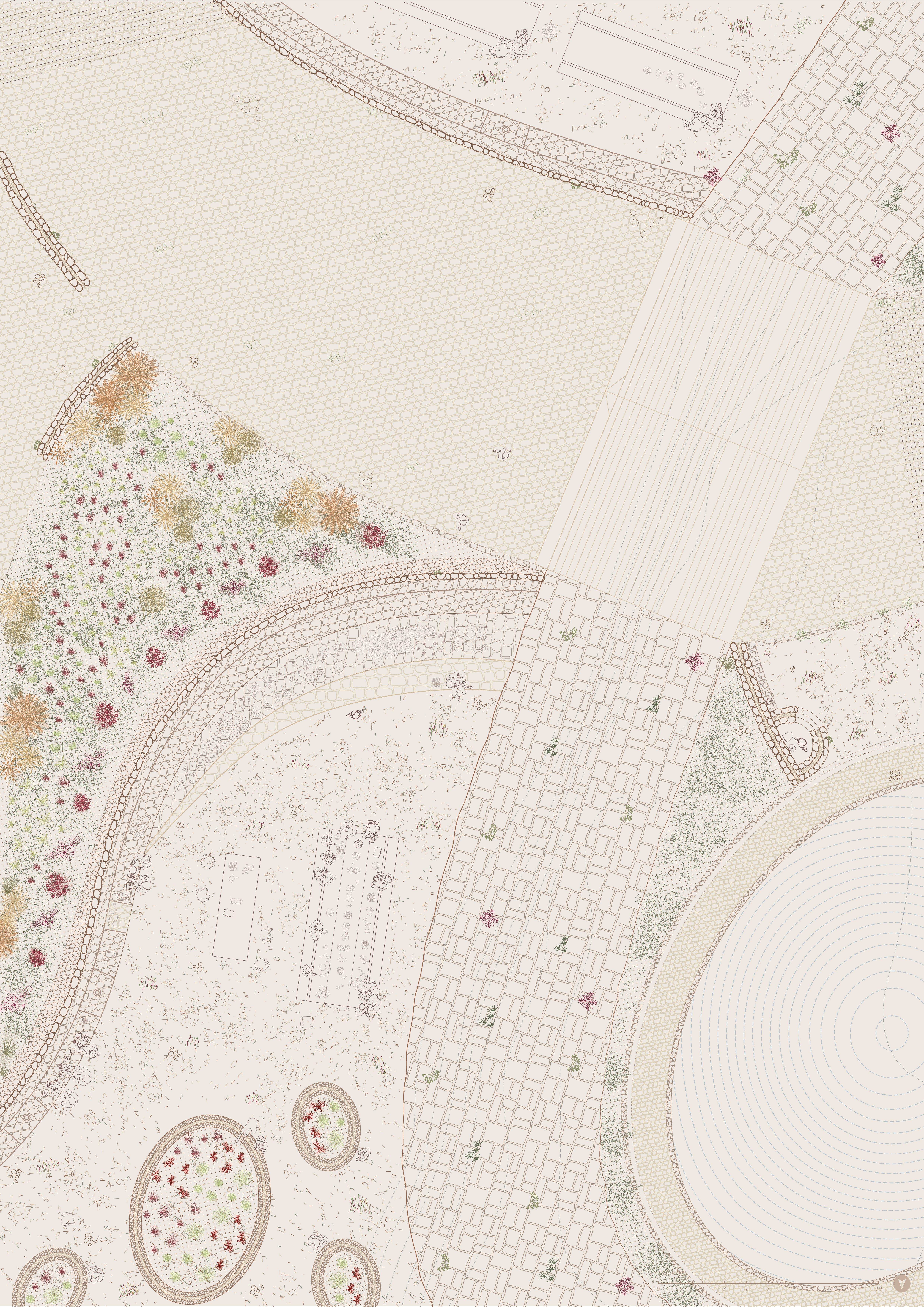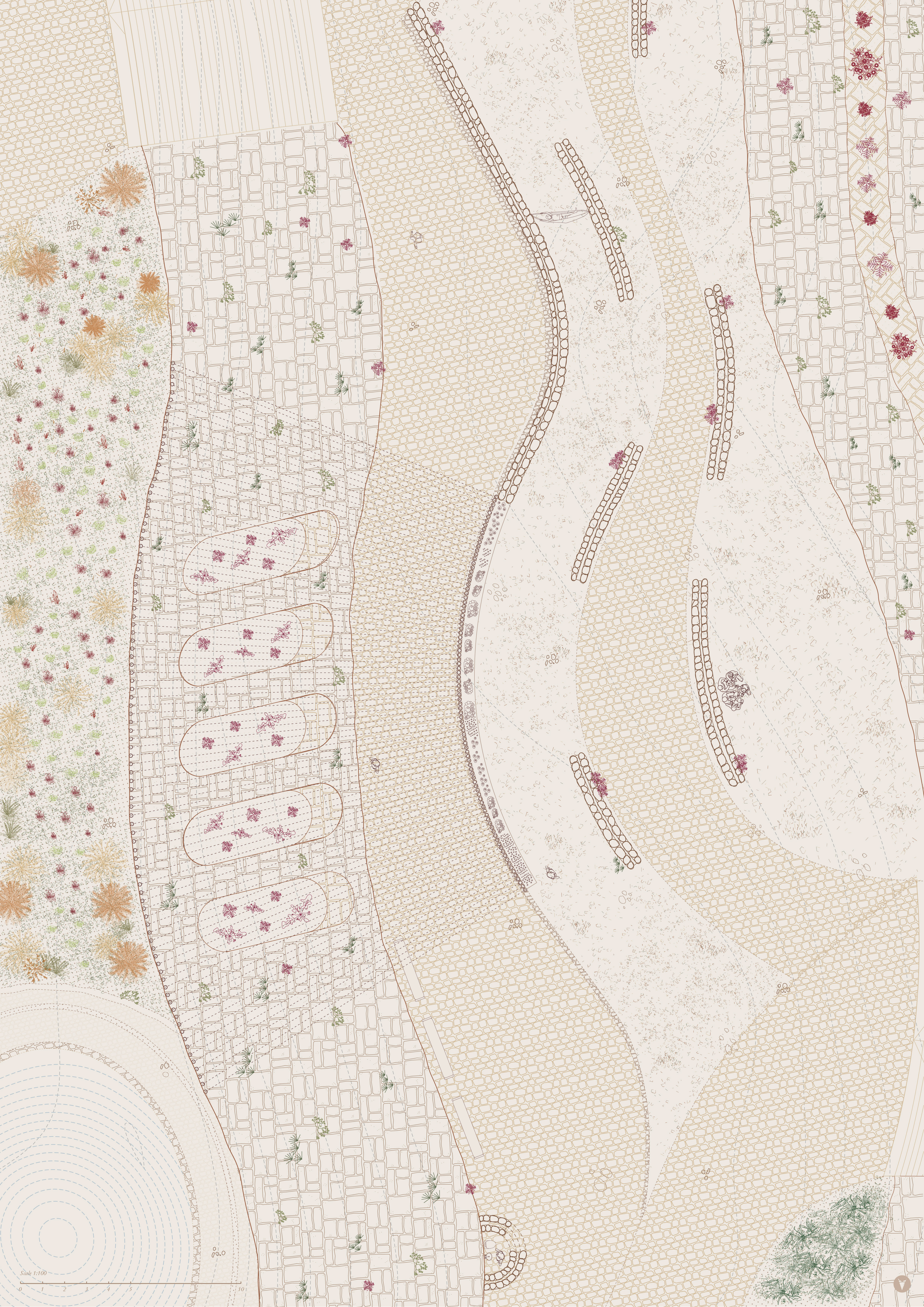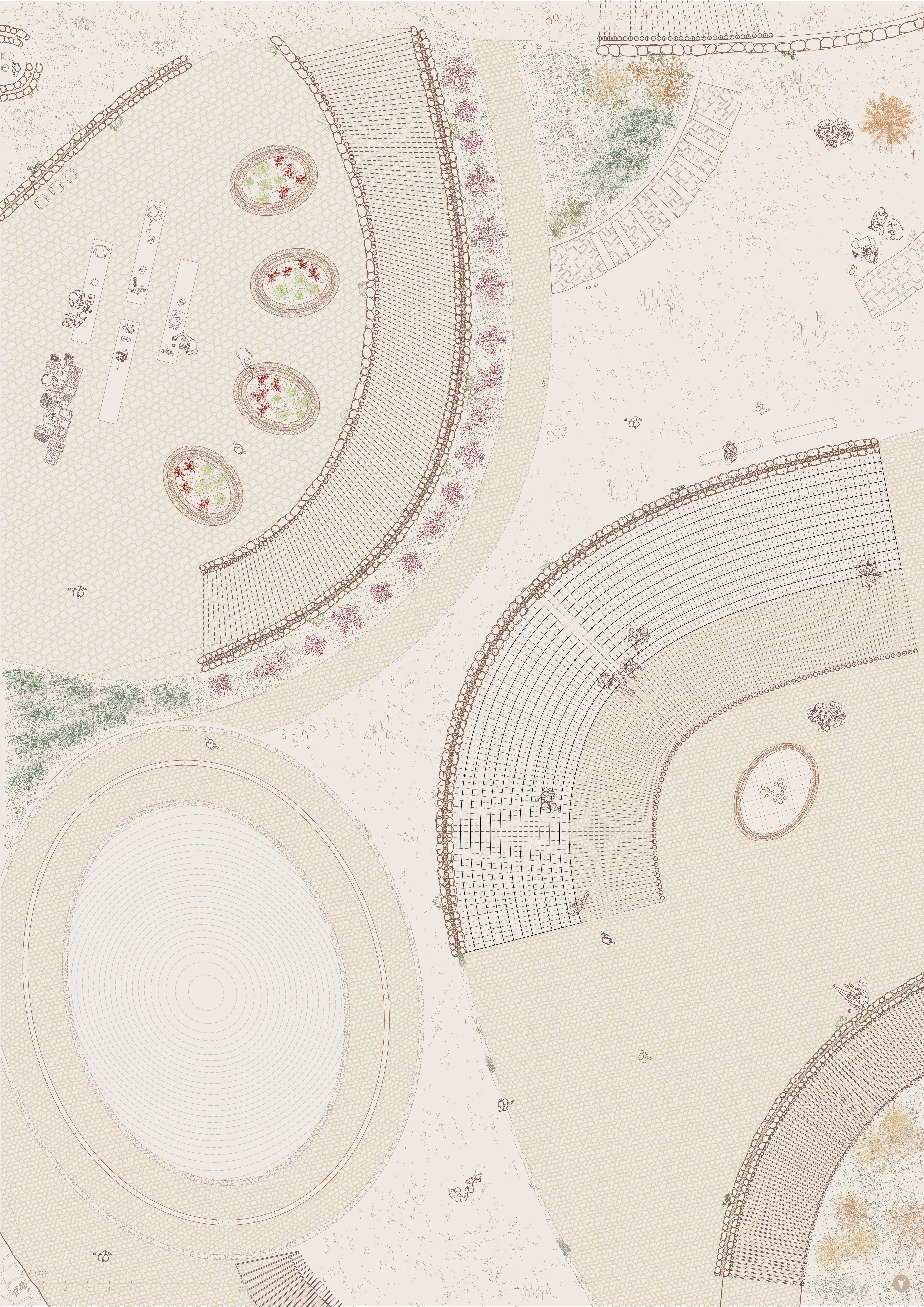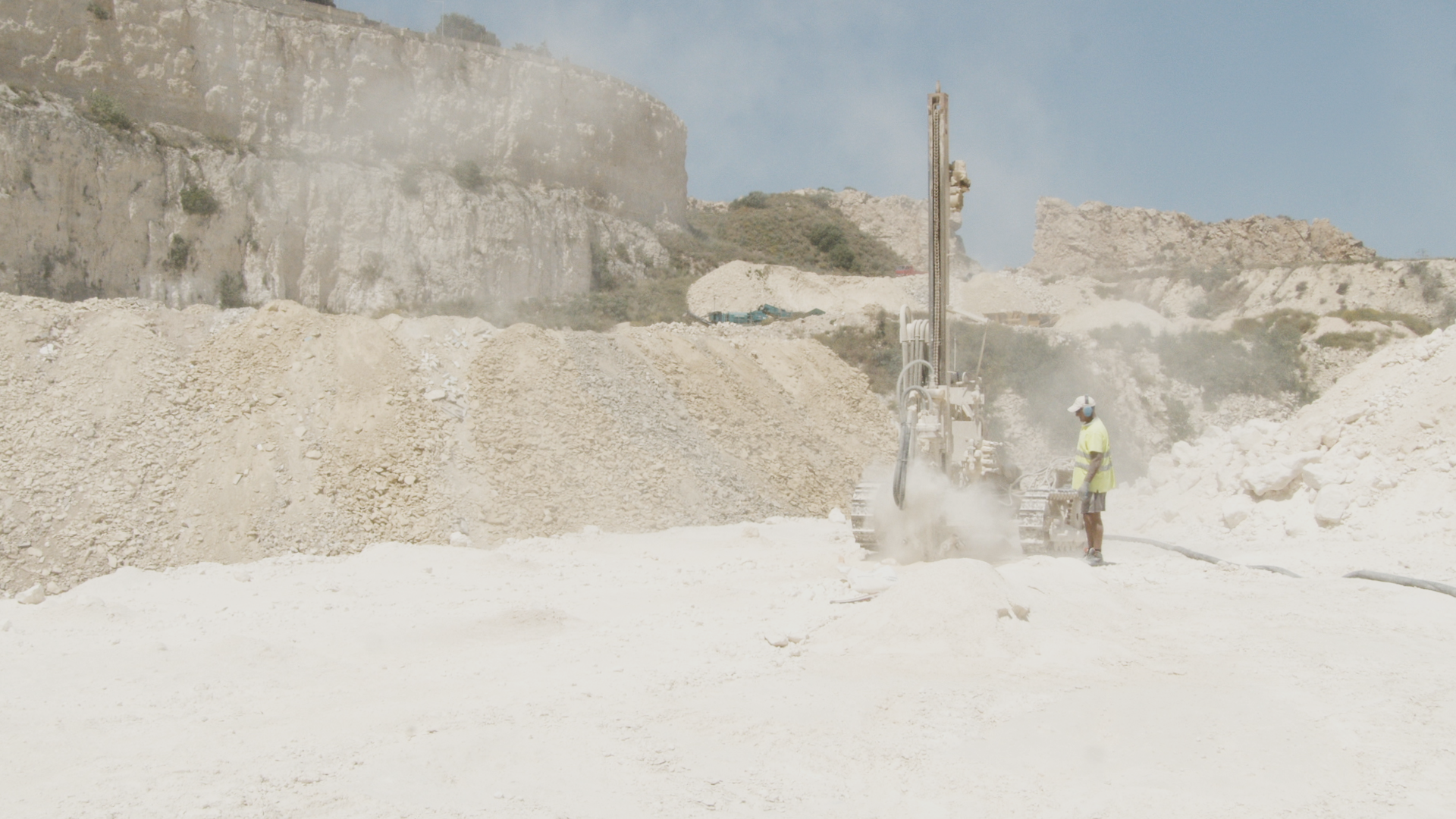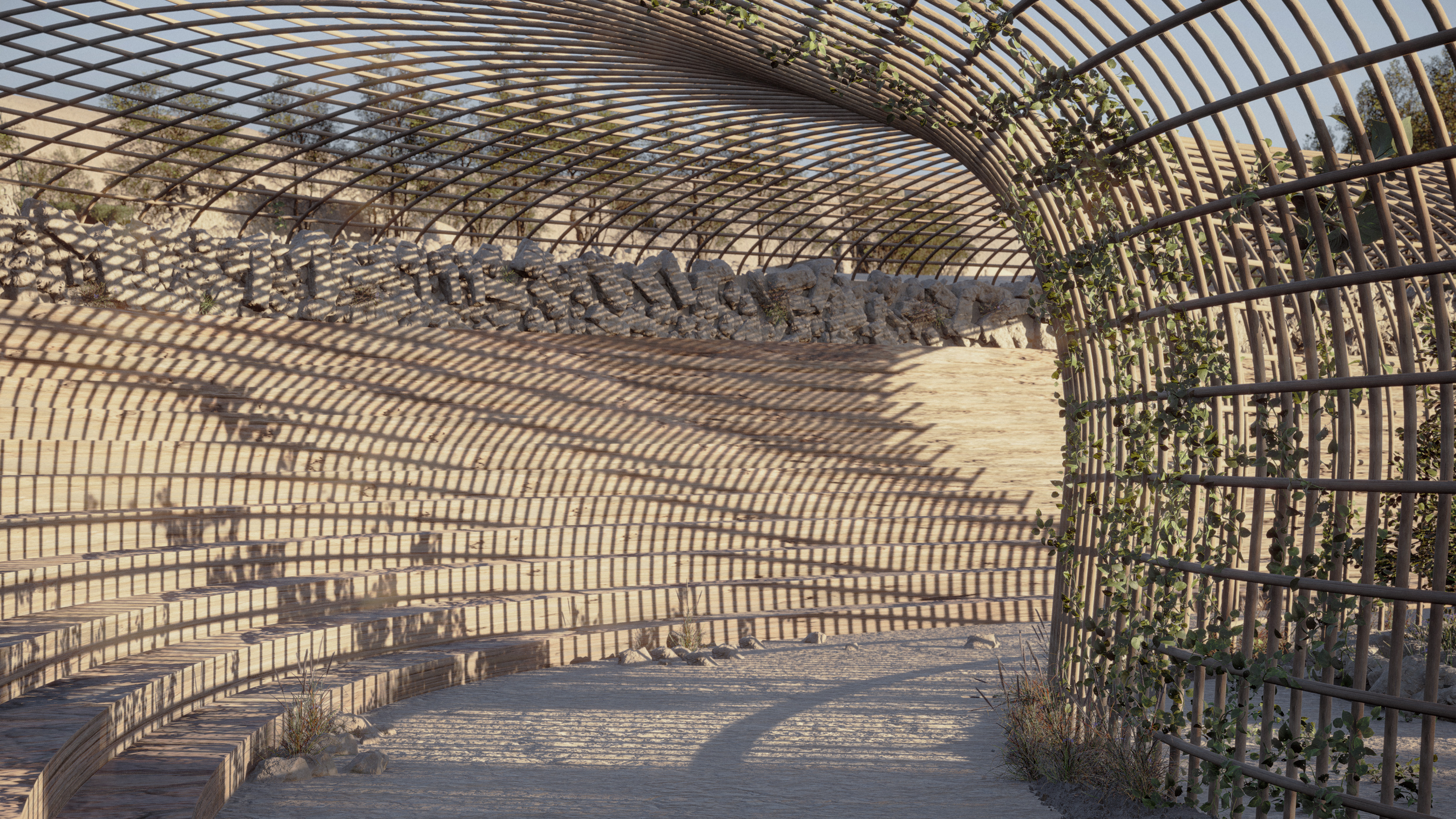Reconnecting with nature
Threading Roots
Threading Roots: Shifting Landscapes, Food Security & a Planetary Garden
Threading Roots regenerates a depleted quarry at the island’s heart, where urban, industrial, and rural contexts meet. Through afforestation and ecological renewal, it reconnects communities with local craftsmanship, heritage, and produce. It reconstructs L-Imnarja, a local agricultural feast, with traditional rubble stone and Mediterranean reed weaving. Balancing food, nature, and people, it supports biodiversity, regenerates soils, strengthens food security, and fosters shared stewardship.
Malta
National
It addresses urban-rural linkages
It refers to a physical transformation of the built environment (hard investment)
Early concept
No
No
As an individual
Threading Roots is a multifaceted project that regenerates a depleted limestone quarry at the island’s heart—a site where urban, industrial, and rural contexts converge. Its aim is to reintroduce life through afforestation, agroforestry, and ecological renewal while reconnecting communities with local craftsmanship, heritage, and food traditions. By reconstructing L-Imnarja—a local agricultural feast celebrating Maltese craft and produce—the project introduces tools to adapt traditional practices for contemporary contexts and varying scales of intimacy.
Targeting local residents, farmers, chefs, NGOs, and regenerative farming advocates, Threading Roots dissolves boundaries between people, food, and ecologies. Acting as a test bed for conviviality, access, and experimentation, it employs traditional rubble stone building and Mediterranean reed weaving techniques to create a distributed architecture across the quarry. Initiatives like collective cooking, seed exchanges, agroforestry, and the revival of heritage dry stone rubble systems have fostered biodiversity, regenerated soils, strengthened food security, and reduced carbon footprints. The project embodies New European Bauhaus values—sustainability, inclusivity, creativity, and collaboration—while tackling challenges such as ecological degradation, loss of heritage, and food dependency in a landscape marked by drought, salinated soils, and limited land.
Innovative reuse of materials such as limestone from the quarry, as well as, construction sites for rubble walls preserves indigenous building techniques and mitigates extraction impacts. Whilst repurposing invasive Arundo Donax transforms a problematic species into a resource for material weaving, enhancing local architecture.
Threading Roots enhances local understanding of the island's ecologies through activities like weaving, afforestation, and plant cultivation, empowering communities to sustain and adapt resources for a resilient, sustainable future.
Targeting local residents, farmers, chefs, NGOs, and regenerative farming advocates, Threading Roots dissolves boundaries between people, food, and ecologies. Acting as a test bed for conviviality, access, and experimentation, it employs traditional rubble stone building and Mediterranean reed weaving techniques to create a distributed architecture across the quarry. Initiatives like collective cooking, seed exchanges, agroforestry, and the revival of heritage dry stone rubble systems have fostered biodiversity, regenerated soils, strengthened food security, and reduced carbon footprints. The project embodies New European Bauhaus values—sustainability, inclusivity, creativity, and collaboration—while tackling challenges such as ecological degradation, loss of heritage, and food dependency in a landscape marked by drought, salinated soils, and limited land.
Innovative reuse of materials such as limestone from the quarry, as well as, construction sites for rubble walls preserves indigenous building techniques and mitigates extraction impacts. Whilst repurposing invasive Arundo Donax transforms a problematic species into a resource for material weaving, enhancing local architecture.
Threading Roots enhances local understanding of the island's ecologies through activities like weaving, afforestation, and plant cultivation, empowering communities to sustain and adapt resources for a resilient, sustainable future.
Regeneration
Community
Heritage
Sustainability
Food Security
Threading Roots champions sustainability through ecological regeneration, resource efficiency, and community resilience, addressing Malta’s environmental challenges by integrating traditional knowledge with innovative practices.
Preserving Traditional Building Techniques: The project revives rubble wall and terracing systems, historically introduced during the Arab period, which are crucial for soil retention and water management in Malta’s arid conditions. By repurposing limestone from the quarry and nearby construction sites, it reduces extraction while reinforcing these heritage techniques.
Innovating with Arundo Donax: The project reimagines the Mediterranean giant reed —one of the most invasive species—as a structural material, elevating it from informal use to an alternative for small-scale architecture. Through weaving techniques, it demonstrates this materials potential as a lightweight, regenerative, and locally abundant building material.
Fostering Local Food Resilience: Creating an environment for seed exchange, agroforestry, and knowledge-sharing, it enhances understanding of local food production, seed adaptation, and climate resilience. The reconstructed feast space connects communities to traditional growing techniques while encouraging experimentation with sustainable, place-based agriculture.
Bridging Rural, Urban, and Industrial Landscapes: The project improves access to local food markets by reconnecting fragmented territories and fostering relationships between farmers, urban dwellers, and industrial areas. It transforms the extracted quarry into a regenerative landscape, embedding local ecologies into daily life and reinforcing the importance of food sovereignty and environmental stewardship in a changing climate.
By integrating these strategies, Threading Roots sets a precedent for sustainable development, demonstrating how heritage, ecological restoration, and material innovation can shape resilient, resource-conscious futures.
Preserving Traditional Building Techniques: The project revives rubble wall and terracing systems, historically introduced during the Arab period, which are crucial for soil retention and water management in Malta’s arid conditions. By repurposing limestone from the quarry and nearby construction sites, it reduces extraction while reinforcing these heritage techniques.
Innovating with Arundo Donax: The project reimagines the Mediterranean giant reed —one of the most invasive species—as a structural material, elevating it from informal use to an alternative for small-scale architecture. Through weaving techniques, it demonstrates this materials potential as a lightweight, regenerative, and locally abundant building material.
Fostering Local Food Resilience: Creating an environment for seed exchange, agroforestry, and knowledge-sharing, it enhances understanding of local food production, seed adaptation, and climate resilience. The reconstructed feast space connects communities to traditional growing techniques while encouraging experimentation with sustainable, place-based agriculture.
Bridging Rural, Urban, and Industrial Landscapes: The project improves access to local food markets by reconnecting fragmented territories and fostering relationships between farmers, urban dwellers, and industrial areas. It transforms the extracted quarry into a regenerative landscape, embedding local ecologies into daily life and reinforcing the importance of food sovereignty and environmental stewardship in a changing climate.
By integrating these strategies, Threading Roots sets a precedent for sustainable development, demonstrating how heritage, ecological restoration, and material innovation can shape resilient, resource-conscious futures.
Threading Roots creates a multi-sensory, immersive experience that reconnects people with Malta’s cultural and ecological heritage through design, materiality, and communal interaction.
Celebrating Cultural Identity Through Craft: The project revives traditional rubble wall construction and Mediterranean reed weaving, transforming these techniques into contemporary spatial interventions. These tactile structures create gathering spaces for storytelling, food sharing, and cultural exchange, fostering a renewed appreciation for local craftsmanship.
Engaging with the Landscape: The design integrates afforestation, agroforestry, and seasonal planting, shaping an evolving, living environment. As the quarry regenerates, the landscape becomes a dynamic archive of ecological restoration and adaptation, offering visitors an experience that shifts through time and seasons.
Reconstructing the Agricultural Feast: The project reinterprets L-Imnarja, an annual agricultural celebration, as a contemporary, distributed architecture for collective cooking, foraging, and seed exchange. Spaces for dining, markets, and workshops create a sensory-rich environment where taste, smell, and touch become tools for engagement with Malta’s biodiversity.
Blurring Boundaries Between Nature and Built Space: By integrating natural materials, organic forms, and open structures, the project dissolves distinctions between built and natural environments, creating an inviting, inclusive space that encourages participation, reflection, and learning.
Extending the Narrative Through Film: Threading Roots envisions the site’s transformation through a poetic, future-oriented lens whilst juxtaposing past and present landscapes, inviting viewers to engage with the project's themes.
Threading Roots exemplifies how design can bridge past and future, transforming forgotten landscapes into vibrant, community-driven cultural spaces that celebrate heritage while fostering ecological resilience.
Celebrating Cultural Identity Through Craft: The project revives traditional rubble wall construction and Mediterranean reed weaving, transforming these techniques into contemporary spatial interventions. These tactile structures create gathering spaces for storytelling, food sharing, and cultural exchange, fostering a renewed appreciation for local craftsmanship.
Engaging with the Landscape: The design integrates afforestation, agroforestry, and seasonal planting, shaping an evolving, living environment. As the quarry regenerates, the landscape becomes a dynamic archive of ecological restoration and adaptation, offering visitors an experience that shifts through time and seasons.
Reconstructing the Agricultural Feast: The project reinterprets L-Imnarja, an annual agricultural celebration, as a contemporary, distributed architecture for collective cooking, foraging, and seed exchange. Spaces for dining, markets, and workshops create a sensory-rich environment where taste, smell, and touch become tools for engagement with Malta’s biodiversity.
Blurring Boundaries Between Nature and Built Space: By integrating natural materials, organic forms, and open structures, the project dissolves distinctions between built and natural environments, creating an inviting, inclusive space that encourages participation, reflection, and learning.
Extending the Narrative Through Film: Threading Roots envisions the site’s transformation through a poetic, future-oriented lens whilst juxtaposing past and present landscapes, inviting viewers to engage with the project's themes.
Threading Roots exemplifies how design can bridge past and future, transforming forgotten landscapes into vibrant, community-driven cultural spaces that celebrate heritage while fostering ecological resilience.
Fostering Inclusion Through Shared Spaces and Practices
Threading Roots creates an accessible, communal environment where people from diverse backgrounds engage in shared cultural and ecological practices. By integrating traditional rubble wall construction and Mediterranean reed weaving, the project empowers local artisans and farmers, ensuring the transfer of knowledge across generations.
Accessibility and Affordability: The project’s open, adaptable design welcomes all, with no barriers to participation. Public workshops on agroforestry, foraging, and food preparation provide hands-on learning experiences, fostering inclusivity regardless of socioeconomic status.
Collective Stewardship: By engaging local farmers, chefs, and residents in decision-making, Threading Roots promotes a distributed governance model. Community-led markets, seed exchanges, and shared growing spaces strengthen local food networks, reducing reliance on imports while supporting small-scale producers.
Redefining Public Space: Situated at the intersection of urban, industrial, and rural landscapes, the project acts as a bridge, reconnecting people with natural cycles and heritage. It transforms a former quarry into an open, evolving environment that is shaped by collective use, ensuring long-term social and ecological sustainability.
By prioritizing participation, affordability, and community-led governance, Threading Roots demonstrates how inclusive design can cultivate resilience, preserve cultural heritage, and create new models of shared stewardship.
Threading Roots creates an accessible, communal environment where people from diverse backgrounds engage in shared cultural and ecological practices. By integrating traditional rubble wall construction and Mediterranean reed weaving, the project empowers local artisans and farmers, ensuring the transfer of knowledge across generations.
Accessibility and Affordability: The project’s open, adaptable design welcomes all, with no barriers to participation. Public workshops on agroforestry, foraging, and food preparation provide hands-on learning experiences, fostering inclusivity regardless of socioeconomic status.
Collective Stewardship: By engaging local farmers, chefs, and residents in decision-making, Threading Roots promotes a distributed governance model. Community-led markets, seed exchanges, and shared growing spaces strengthen local food networks, reducing reliance on imports while supporting small-scale producers.
Redefining Public Space: Situated at the intersection of urban, industrial, and rural landscapes, the project acts as a bridge, reconnecting people with natural cycles and heritage. It transforms a former quarry into an open, evolving environment that is shaped by collective use, ensuring long-term social and ecological sustainability.
By prioritizing participation, affordability, and community-led governance, Threading Roots demonstrates how inclusive design can cultivate resilience, preserve cultural heritage, and create new models of shared stewardship.
Community Engagement and Collective Participation
Threading Roots is shaped by active collaboration with local citizens, farmers, artisans, and cultural organizations, ensuring the project is deeply embedded in Malta’s social and ecological fabric.
Research and Collaborative Development: The project’s foundation was built on extensive research, including interviews with local NGOs, farmers, and land stewards, as well as land-use mapping to understand agricultural shifts, ecological challenges, and urban expansion. These insights informed the project’s interventions, ensuring they align with local needs and environmental conditions.
Direct Involvement in Design and Implementation: Farmers, foragers, and chefs contribute knowledge of local agricultural traditions, shaping regenerative farming and food-sharing practices. Traditional builders and craftspeople inform the adaptation of rubble wall construction and Mediterranean reed weaving, ensuring these techniques evolve while remaining relevant to contemporary needs.
Workshops and Knowledge Exchange: Public workshops and participatory design sessions engage citizens in afforestation efforts, food cultivation, and seed exchanges. These activities empower communities with hands-on skills, strengthening local stewardship of natural resources.
Impact on the Project: This engagement has refined the project’s interventions, ensuring ecological restoration aligns with local traditions. The involvement of civil society groups, such as nature conservation NGOs and agricultural cooperatives, has reinforced the project’s long-term impact, fostering wider awareness of sustainable practices and the role of traditional knowledge in contemporary ecological resilience.
By embedding participation at every stage, Threading Roots ensures that the project is not just for the community but shaped by and sustained through collective action.
Threading Roots is shaped by active collaboration with local citizens, farmers, artisans, and cultural organizations, ensuring the project is deeply embedded in Malta’s social and ecological fabric.
Research and Collaborative Development: The project’s foundation was built on extensive research, including interviews with local NGOs, farmers, and land stewards, as well as land-use mapping to understand agricultural shifts, ecological challenges, and urban expansion. These insights informed the project’s interventions, ensuring they align with local needs and environmental conditions.
Direct Involvement in Design and Implementation: Farmers, foragers, and chefs contribute knowledge of local agricultural traditions, shaping regenerative farming and food-sharing practices. Traditional builders and craftspeople inform the adaptation of rubble wall construction and Mediterranean reed weaving, ensuring these techniques evolve while remaining relevant to contemporary needs.
Workshops and Knowledge Exchange: Public workshops and participatory design sessions engage citizens in afforestation efforts, food cultivation, and seed exchanges. These activities empower communities with hands-on skills, strengthening local stewardship of natural resources.
Impact on the Project: This engagement has refined the project’s interventions, ensuring ecological restoration aligns with local traditions. The involvement of civil society groups, such as nature conservation NGOs and agricultural cooperatives, has reinforced the project’s long-term impact, fostering wider awareness of sustainable practices and the role of traditional knowledge in contemporary ecological resilience.
By embedding participation at every stage, Threading Roots ensures that the project is not just for the community but shaped by and sustained through collective action.
While Threading Roots has not yet been implemented, it presents a vision for regenerating an exhausted quarry, engaging stakeholders at multiple levels—local, regional, national, and European. By fostering collaborations, it highlights land reuse, material circularity, and ecological restoration as scalable strategies for post-industrial sites across the Mediterranean.
Local Engagement
The project engages local farmers, artisans, and NGOs through research, interviews, and land-use mapping. Traditional builders and craftspeople have informed the reuse of limestone and Arundo donax, ensuring that heritage techniques remain central to the design. These collaborations provide valuable insights into ecological degradation and challenges in local food production.
Regional & National Potential
As the quarry nears exhaustion, the project can advocate for policies that prioritize adaptive land reuse. Engagement with planning bodies, environmental agencies, and cultural institutions could support a shift in Malta’s extractive land-use practices, fostering sustainable, community-driven interventions.
European & Mediterranean Impact
The project offers a replicable model for similar sites across the Mediterranean, where quarrying and land depletion are shared challenges. The use of locally available materials aligns with EU-wide sustainability goals, bridging local regeneration efforts with broader climate-responsive strategies. By engaging European research networks and funding bodies, Threading Roots could influence policies on circular construction and ecological restoration.
By increasing stakeholder involvement, the project has the potential to transform a degraded site into a model for land reclamation, cultural revival, and sustainable resource use—creating a precedent for resilient landscapes across the region.
Local Engagement
The project engages local farmers, artisans, and NGOs through research, interviews, and land-use mapping. Traditional builders and craftspeople have informed the reuse of limestone and Arundo donax, ensuring that heritage techniques remain central to the design. These collaborations provide valuable insights into ecological degradation and challenges in local food production.
Regional & National Potential
As the quarry nears exhaustion, the project can advocate for policies that prioritize adaptive land reuse. Engagement with planning bodies, environmental agencies, and cultural institutions could support a shift in Malta’s extractive land-use practices, fostering sustainable, community-driven interventions.
European & Mediterranean Impact
The project offers a replicable model for similar sites across the Mediterranean, where quarrying and land depletion are shared challenges. The use of locally available materials aligns with EU-wide sustainability goals, bridging local regeneration efforts with broader climate-responsive strategies. By engaging European research networks and funding bodies, Threading Roots could influence policies on circular construction and ecological restoration.
By increasing stakeholder involvement, the project has the potential to transform a degraded site into a model for land reclamation, cultural revival, and sustainable resource use—creating a precedent for resilient landscapes across the region.
Threading Roots integrates architecture, ecology, agriculture, craftsmanship, and cultural heritage to create a holistic approach to quarry regeneration. The project’s development involved cross-disciplinary research, interviews with local experts, and land-use mapping to bridge knowledge gaps and foster innovative solutions.
Architecture & Material Research
Architectural strategies focus on adaptive reuse of site-extracted limestone and Arundo donax (giant Mediterranean reed), exploring their potential beyond informal interventions. Traditional rubble wall and terracing techniques—vital for soil retention and irrigation since the Arab period—are reinterpreted for contemporary ecological design.
Ecology & Land Regeneration
Environmental scientists and agroforestry experts informed afforestation and soil restoration strategies, ensuring that interventions support biodiversity and sustainable land management. The project explores how regenerative farming and native vegetation can transform degraded landscapes into productive ecosystems.
Agriculture & Food Systems
Collaboration with farmers, seed custodians, and local NGOs deepened understanding of Malta’s food security challenges, seed adaptation, and the value of small-scale agriculture. The project proposes an accessible food network by integrating growing, harvesting, and community-led markets, strengthening urban-rural connections.
Craft & Cultural Heritage
Artisans specializing in rubble wall construction and weaving techniques contributed to the project’s material research, reviving endangered skills while demonstrating their relevance in contemporary design.
By weaving these disciplines together, Threading Roots creates a model for place-based ecological and cultural regeneration. This interdisciplinary exchange fosters an adaptable framework, ensuring the project remains responsive to environmental and societal needs.
Architecture & Material Research
Architectural strategies focus on adaptive reuse of site-extracted limestone and Arundo donax (giant Mediterranean reed), exploring their potential beyond informal interventions. Traditional rubble wall and terracing techniques—vital for soil retention and irrigation since the Arab period—are reinterpreted for contemporary ecological design.
Ecology & Land Regeneration
Environmental scientists and agroforestry experts informed afforestation and soil restoration strategies, ensuring that interventions support biodiversity and sustainable land management. The project explores how regenerative farming and native vegetation can transform degraded landscapes into productive ecosystems.
Agriculture & Food Systems
Collaboration with farmers, seed custodians, and local NGOs deepened understanding of Malta’s food security challenges, seed adaptation, and the value of small-scale agriculture. The project proposes an accessible food network by integrating growing, harvesting, and community-led markets, strengthening urban-rural connections.
Craft & Cultural Heritage
Artisans specializing in rubble wall construction and weaving techniques contributed to the project’s material research, reviving endangered skills while demonstrating their relevance in contemporary design.
By weaving these disciplines together, Threading Roots creates a model for place-based ecological and cultural regeneration. This interdisciplinary exchange fosters an adaptable framework, ensuring the project remains responsive to environmental and societal needs.
Threading Roots redefines quarry regeneration by integrating ecology, architecture, and cultural heritage into a dynamic, community-driven model. Unlike mainstream restoration projects, it transforms the exhausted site into a test bed for afforestation, agroforestry, and cultural production, positioning it as a living archive of ecological adaptation.
Material Reuse & Craft Revival
The project reinterprets Malta’s rubble wall construction and terracing techniques—not just for conservation, but as tools for soil regeneration, water retention, and spatial organization. It pioneers the architectural use of Arundo donax (giant Mediterranean reed), shifting its perception from an invasive species to a structural material, offering a new approach to small-scale, sustainable architecture.
Food Networks & Rural-Urban Integration
Unlike conventional agricultural initiatives, Threading Roots fosters a holistic relationship between land, food, and people. By embedding growing, harvesting, and communal feasting within its design, it reconnects communities with traditional farming practices, strengthening food security and highlighting alternative land use strategies.
Film as Narrative & Design Tool
Beyond physical interventions, the project employs film as a speculative projection of its future, immersing audiences in Malta’s shifting ecological and cultural realities. This storytelling approach raises awareness and invites engagement, bridging past and future through multi-sensory experience.
By blending ecological restoration, material experimentation, and cultural storytelling, Threading Roots offers an innovative blueprint for small island territories facing resource scarcity, biodiversity loss, and socio-ecological fragmentation.
Material Reuse & Craft Revival
The project reinterprets Malta’s rubble wall construction and terracing techniques—not just for conservation, but as tools for soil regeneration, water retention, and spatial organization. It pioneers the architectural use of Arundo donax (giant Mediterranean reed), shifting its perception from an invasive species to a structural material, offering a new approach to small-scale, sustainable architecture.
Food Networks & Rural-Urban Integration
Unlike conventional agricultural initiatives, Threading Roots fosters a holistic relationship between land, food, and people. By embedding growing, harvesting, and communal feasting within its design, it reconnects communities with traditional farming practices, strengthening food security and highlighting alternative land use strategies.
Film as Narrative & Design Tool
Beyond physical interventions, the project employs film as a speculative projection of its future, immersing audiences in Malta’s shifting ecological and cultural realities. This storytelling approach raises awareness and invites engagement, bridging past and future through multi-sensory experience.
By blending ecological restoration, material experimentation, and cultural storytelling, Threading Roots offers an innovative blueprint for small island territories facing resource scarcity, biodiversity loss, and socio-ecological fragmentation.
Threading Roots integrates ecological restoration, material experimentation, and cultural engagement through a process-driven, site-specific methodology.
1. Site & Ecological Research
The project begins with an in-depth study of the quarry’s landscape, including soil conditions, water retention, and existing biodiversity. Land use mapping and historical analysis contextualize the site within Malta’s agricultural and ecological systems.
2. Material Testing & Craft Integration
Traditional rubble wall systems and Arundo donax (giant Mediterranean reed) are explored as sustainable construction materials suited to Malta’s resource limitations. Their architectural applications go beyond informal structures, promoting local craft in contemporary design.
3. Community & Stakeholder Engagement
Interviews with local NGOs, farmers, and craftspeople identify existing knowledge networks and challenges. Workshops foster collaboration between traditional practitioners and contemporary designers, ensuring shared learning and participation.
4. Agroforestry & Regeneration Strategies
Afforestation and food production integrate dryland farming, seed exchange, and agroforestry, promoting soil regeneration, biodiversity, and climate resilience while reconnecting urban and rural landscapes.
5. Film as a Design Tool
A speculative film envisions the project’s future impact, narrating the evolving relationship between people, food, and ecology. It raises awareness and engages wider audiences in discussions on land use and sustainability.
By combining research, material innovation, and participatory engagement, Threading Roots presents a replicable model for transforming degraded landscapes into productive, community-centred ecosystems.
1. Site & Ecological Research
The project begins with an in-depth study of the quarry’s landscape, including soil conditions, water retention, and existing biodiversity. Land use mapping and historical analysis contextualize the site within Malta’s agricultural and ecological systems.
2. Material Testing & Craft Integration
Traditional rubble wall systems and Arundo donax (giant Mediterranean reed) are explored as sustainable construction materials suited to Malta’s resource limitations. Their architectural applications go beyond informal structures, promoting local craft in contemporary design.
3. Community & Stakeholder Engagement
Interviews with local NGOs, farmers, and craftspeople identify existing knowledge networks and challenges. Workshops foster collaboration between traditional practitioners and contemporary designers, ensuring shared learning and participation.
4. Agroforestry & Regeneration Strategies
Afforestation and food production integrate dryland farming, seed exchange, and agroforestry, promoting soil regeneration, biodiversity, and climate resilience while reconnecting urban and rural landscapes.
5. Film as a Design Tool
A speculative film envisions the project’s future impact, narrating the evolving relationship between people, food, and ecology. It raises awareness and engages wider audiences in discussions on land use and sustainability.
By combining research, material innovation, and participatory engagement, Threading Roots presents a replicable model for transforming degraded landscapes into productive, community-centred ecosystems.
Threading Roots offers a flexible, adaptable model for ecological and cultural regeneration, making it applicable across different geographies and communities facing similar challenges.
The project’s use of traditional Maltese rubble wall techniques (Ħajt tas-Sejjieħ) and Arundo donax weaving can be replicated across Mediterranean and arid regions. By valorising locally available materials and traditional skills, communities can reduce reliance on imported resources while preserving intangible heritage.
The afforestation and agroforestry strategies—designed to combat soil erosion, improve irrigation, and enhance biodiversity—can be adapted to degraded landscapes worldwide. These approaches support food sovereignty and climate resilience in regions struggling with desertification, drought, and agricultural decline.
The participatory methodology, including land use mapping, interviews, and workshops, can serve as a template for integrating local knowledge into ecological and cultural projects elsewhere. It ensures inclusivity, fosters collaboration, and strengthens community stewardship over shared landscapes.
The concept of reconstructing agricultural feasts, distributed across a site, as a tool for community gathering, seed exchange, and knowledge-sharing can be applied to other cultural contexts. By reviving food rituals, communities can reconnect with their local ecologies and promote sustainable practices.
The speculative film approach—visualizing potential futures of a site and its interdependencies—can be replicated to raise awareness and influence policy discussions in other regions. It serves as a powerful medium to communicate complex environmental and social issues to diverse audiences.
By integrating material research, ecological restoration, and cultural activation, Threading Roots provides a scalable framework for transforming neglected landscapes into resilient, community-led ecosystems.
The project’s use of traditional Maltese rubble wall techniques (Ħajt tas-Sejjieħ) and Arundo donax weaving can be replicated across Mediterranean and arid regions. By valorising locally available materials and traditional skills, communities can reduce reliance on imported resources while preserving intangible heritage.
The afforestation and agroforestry strategies—designed to combat soil erosion, improve irrigation, and enhance biodiversity—can be adapted to degraded landscapes worldwide. These approaches support food sovereignty and climate resilience in regions struggling with desertification, drought, and agricultural decline.
The participatory methodology, including land use mapping, interviews, and workshops, can serve as a template for integrating local knowledge into ecological and cultural projects elsewhere. It ensures inclusivity, fosters collaboration, and strengthens community stewardship over shared landscapes.
The concept of reconstructing agricultural feasts, distributed across a site, as a tool for community gathering, seed exchange, and knowledge-sharing can be applied to other cultural contexts. By reviving food rituals, communities can reconnect with their local ecologies and promote sustainable practices.
The speculative film approach—visualizing potential futures of a site and its interdependencies—can be replicated to raise awareness and influence policy discussions in other regions. It serves as a powerful medium to communicate complex environmental and social issues to diverse audiences.
By integrating material research, ecological restoration, and cultural activation, Threading Roots provides a scalable framework for transforming neglected landscapes into resilient, community-led ecosystems.
Threading Roots addresses global challenges—climate change, food insecurity, biodiversity loss, and cultural erosion—through locally grounded solutions. By regenerating an exhausted limestone quarry using afforestation, agroforestry, and dry-stone terracing, the project restores degraded landscapes, enhances soil health, and strengthens climate resilience. Resource scarcity is a growing concern, especially on islands with limited natural materials. It rethinks traditional Maltese construction methods, integrating reclaimed limestone and Arundo donax reeds to promote sustainable, circular material use while reducing extraction and waste.
As biodiversity declines worldwide, Threading Roots demonstrates how integrating native plants, pollinator habitats, and agroforestry can restore ecological balance. The project promotes land stewardship by empowering communities to engage with and protect their environment. In response to food dependency, the project fosters regenerative farming, seed exchange, and local food networks, enhancing agricultural self-sufficiency and reconnecting communities with traditional growing practices. Globalization and urbanization have led to the loss of intangible heritage and community traditions. Through these local strategies, Threading Roots presents a replicable model for addressing global crises, fostering resilience, and reconnecting people with their landscapes.By reviving L-Imnarja, an agricultural feast, through contemporary spatial and culinary interventions, Threading Roots preserves intangible heritage while creating new opportunities for engagement. Through participatory design and film, it educates and empowers communities to sustain their environment, offering a scalable model for resilience across similar Mediterranean and island contexts.
As biodiversity declines worldwide, Threading Roots demonstrates how integrating native plants, pollinator habitats, and agroforestry can restore ecological balance. The project promotes land stewardship by empowering communities to engage with and protect their environment. In response to food dependency, the project fosters regenerative farming, seed exchange, and local food networks, enhancing agricultural self-sufficiency and reconnecting communities with traditional growing practices. Globalization and urbanization have led to the loss of intangible heritage and community traditions. Through these local strategies, Threading Roots presents a replicable model for addressing global crises, fostering resilience, and reconnecting people with their landscapes.By reviving L-Imnarja, an agricultural feast, through contemporary spatial and culinary interventions, Threading Roots preserves intangible heritage while creating new opportunities for engagement. Through participatory design and film, it educates and empowers communities to sustain their environment, offering a scalable model for resilience across similar Mediterranean and island contexts.
In the year following the application, Threading Roots will focus on refining the concept, expanding stakeholder engagement, and securing funding for implementation. The first step involves collaborating with local NGOs, policymakers, and landowners to advocate for the site’s regeneration as the quarry nears exhaustion. Public discussions, workshops, and exhibitions will raise awareness about the project’s potential, fostering community involvement and support.
Parallel to this, research will continue on material testing and site-specific applications of Arundo Donax and dry-stone construction, working with artisans and ecological experts to refine building techniques. The project film will serve as a key promotional tool, helping to engage wider audiences and attract investment. Partnerships with Mediterranean institutions will be explored to position Threading Roots as a model for adaptive reuse and ecological restoration in similar landscapes, strengthening its impact beyond Malta.
Parallel to this, research will continue on material testing and site-specific applications of Arundo Donax and dry-stone construction, working with artisans and ecological experts to refine building techniques. The project film will serve as a key promotional tool, helping to engage wider audiences and attract investment. Partnerships with Mediterranean institutions will be explored to position Threading Roots as a model for adaptive reuse and ecological restoration in similar landscapes, strengthening its impact beyond Malta.

